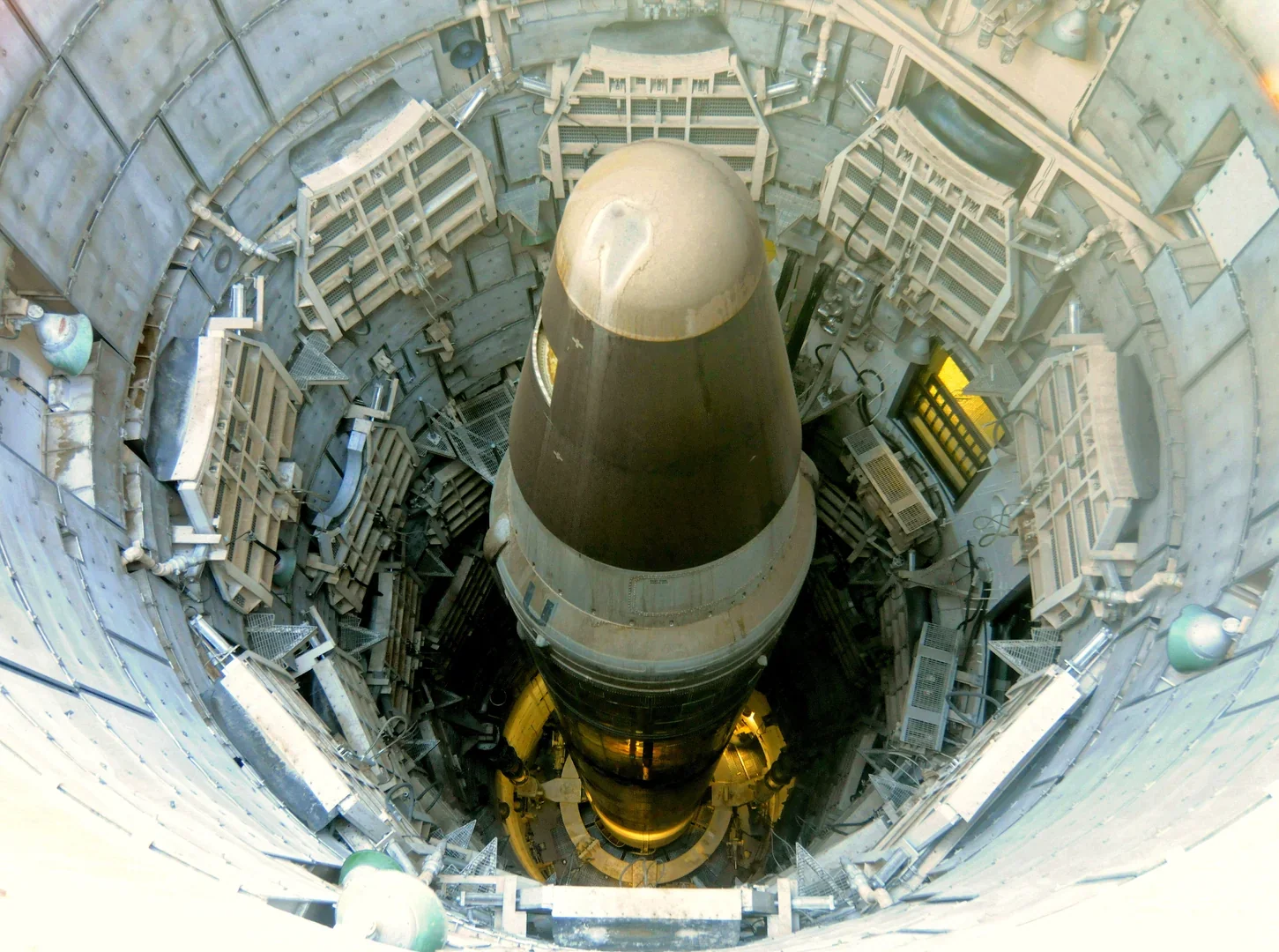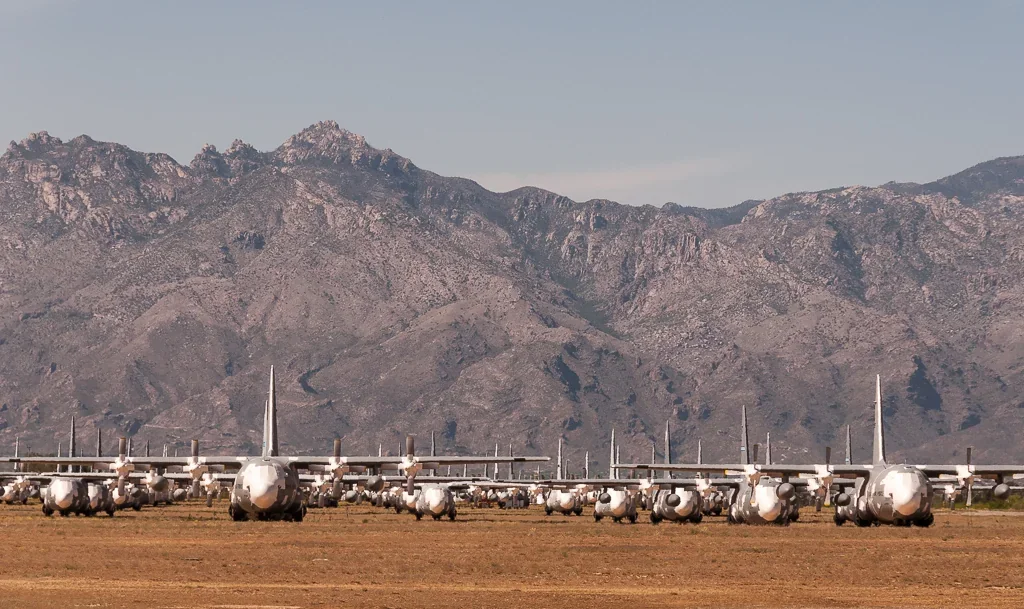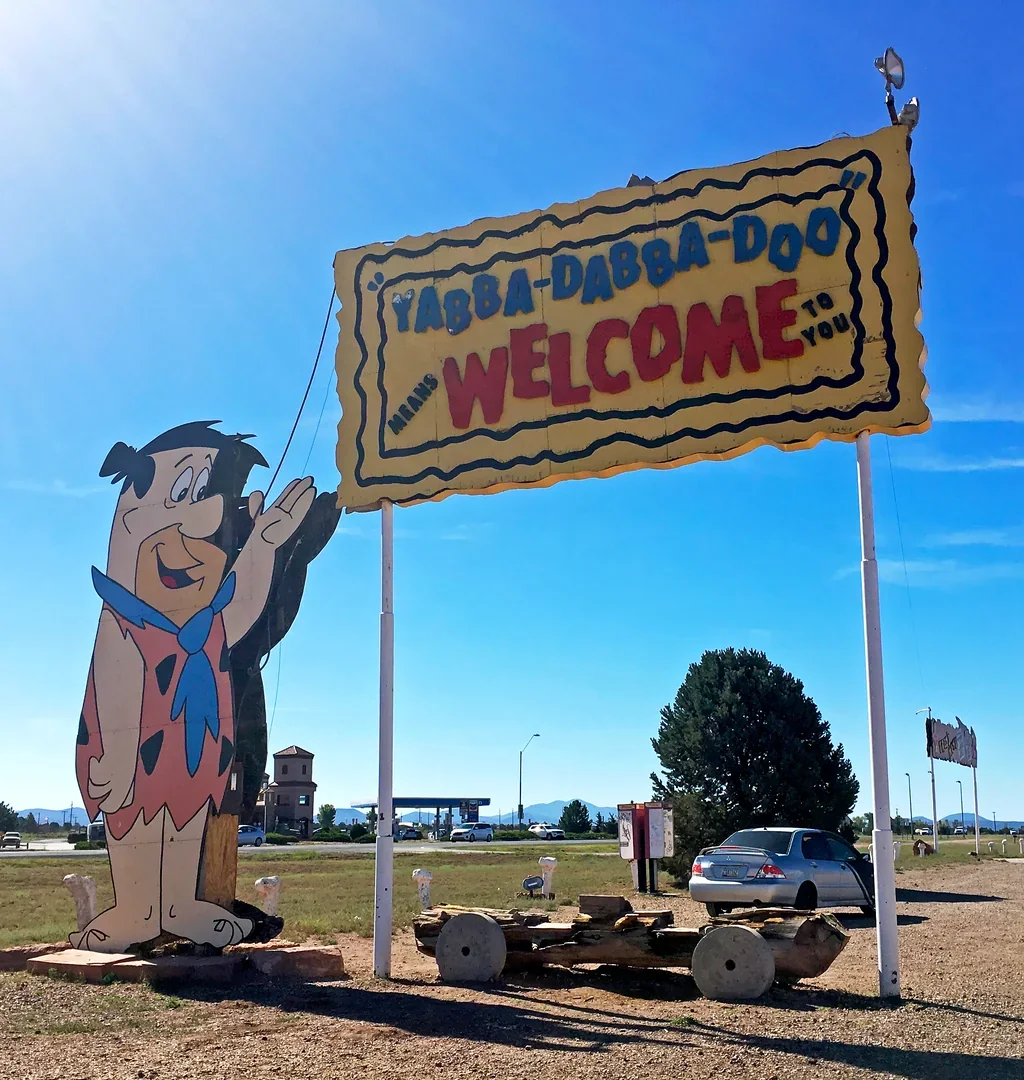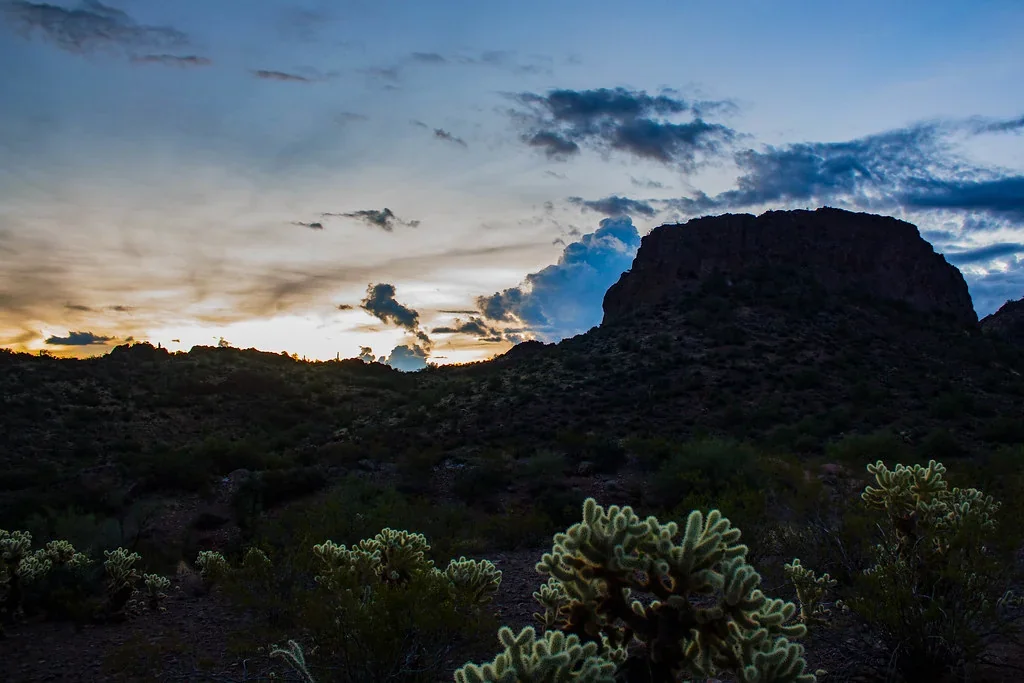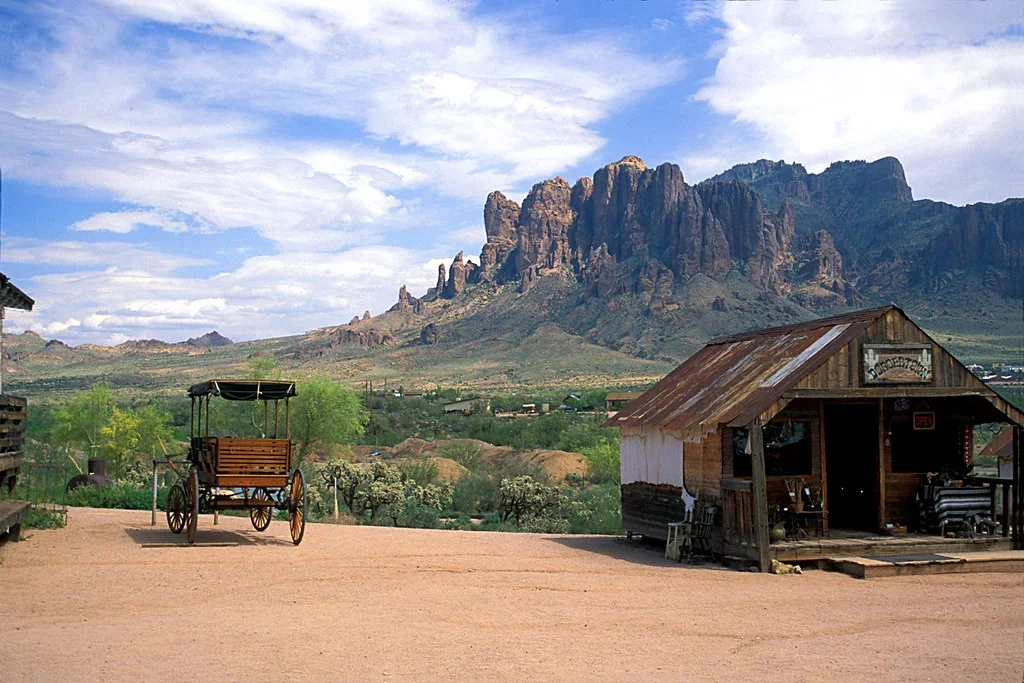15 Quirky Roadside Attractions in Arizona
Complete guide to 15 quirky roadside attractions in arizona. Detailed information, recommendations, and everything you need to know

Arizona's highways stretch through some of America's most dramatic landscapes, but the real treasures aren't always found in nature. Between the towering saguaros and red rock formations, you'll discover a fascinating collection of roadside oddities that tell stories of Cold War paranoia, aviation history, Western mythology, and pure human creativity. These attractions range from decommissioned nuclear missile sites to elaborate cartoon-themed towns, each offering a unique glimpse into different chapters of American culture.
What makes Arizona's roadside attractions particularly compelling is how they blend with the state's natural drama. A massive aircraft graveyard sprawls across the Sonoran Desert, while a Flintstones-themed park sits in the shadow of the Grand Canyon. These aren't your typical tourist traps – they're genuine pieces of Americana that have survived decades of changing travel patterns and cultural shifts. Whether you're planning a cross-country road trip or exploring your own backyard, these destinations offer the kind of authentic experiences that make travel memorable.
The Titan Missile Museum (Green Valley)
Descending into the underground launch facility at the Titan Missile Museum feels like stepping into a thriller novel. This National Historic Landmark preserves the only remaining Titan II missile site in the world, offering visitors an authentic look at Cold War nuclear strategy. Located 25 miles south of Tucson, the museum occupies what was once Missile Site 571-7, one of 54 Titan II installations that formed America's nuclear deterrent from 1963 to 1987.
The experience begins at ground level, where guides explain the missile's capabilities and the 24-hour vigilance required of the crews stationed here. The real impact comes when you descend 35 feet underground into the launch control center, where original equipment remains exactly as it was during active duty. The two-person crew stations, complete with launch keys and communication systems, provide a sobering reminder of how close the world came to nuclear conflict during various international crises.
The museum's crown jewel is the 103-foot-tall Titan II missile itself, still standing in its silo. This 330,000-pound behemoth could deliver a 9-megaton warhead anywhere in the Soviet Union within 30 minutes of launch. During the tour, guides demonstrate the launch sequence using original procedures, stopping just short of actual ignition – a moment that never fails to send chills through visitors.
Tours run daily and last approximately one hour, with specialized "Top to Bottom" tours available for those wanting deeper technical details. The museum also offers "Crew Experience" programs where participants spend time in the launch control center learning actual procedures. Advanced reservations are essential, especially during winter months when visitor numbers peak. The facility maintains its original temperature year-round, making it a refreshing escape from Arizona's summer heat.
The Boneyard (Tucson)
The 309th Aerospace Maintenance and Regeneration Group, known simply as "The Boneyard," represents one of the most impressive sights you'll never quite see clearly. This 2,600-acre facility at Davis-Monthan Air Force Base houses more than 4,000 retired military aircraft, creating what many describe as the world's largest airplane cemetery. The dry climate and alkaline soil of the Sonoran Desert provide perfect preservation conditions, keeping these aviation giants in remarkable condition decades after their final flights.
Stretching across the remarkable landscape of southern Arizona, the facility contains everything from massive B-52 Stratofortresses to sleek F-14 Tomcats. Many aircraft serve as parts suppliers for active military operations, while others await potential return to service. The systematic organization creates an almost surreal geometric pattern when viewed from above, with aircraft arranged in precise rows according to type and condition.
Public access requires booking through the Pima Air & Space Museum, which operates the only authorized tours of the facility. The 90-minute bus tours depart several times daily and provide fascinating insights into both aviation history and military logistics. Knowledgeable guides explain the different aircraft types, their service histories, and their current status. Photography is permitted from the bus, though walking among the aircraft isn't allowed due to security restrictions.
The tour route includes sections dedicated to different aircraft categories, from cargo planes to fighters to specialized reconnaissance aircraft. Seeing dozens of identical aircraft parked in formation drives home the massive scale of military aviation programs. The contrast between these engineered marvels and the stark desert setting creates a uniquely American landscape that speaks to both technological achievement and the inevitable march of progress.
Winter months offer the best touring conditions, with clear skies providing excellent visibility across the vast facility. Summer tours operate early in the morning to avoid extreme heat. The adjacent Pima Air & Space Museum makes an excellent complement to the Boneyard tour, offering closer examination of similar aircraft and deeper historical context.
The Hear Museum (Phoenix)
The Heard Museum stands as one of the world's premier institutions dedicated to Native American art and culture, but its roadside appeal comes from the stunning outdoor sculptures and architecture that draw travelers off nearby Interstate 10. Founded in 1929, the museum has evolved into a cultural landmark that seamlessly blends traditional Native American aesthetics with contemporary museum design, creating visual experiences that begin long before you enter the galleries.
The museum's exterior features impressive bronze sculptures and architectural elements that reflect various Native American artistic traditions. The entrance courtyard welcomes visitors with large-scale installations that change seasonally, often featuring work by contemporary Native artists who blend traditional techniques with modern themes. These outdoor displays serve as a preview of the remarkable collections housed inside, spanning 22 galleries dedicated to different tribal cultures and artistic movements.
Inside, the museum's permanent collection includes more than 40,000 pieces representing Native cultures from across North America, with particular strength in Southwestern tribes. The signature exhibit, "HOME: Native People in the Southwest," presents both historical and contemporary perspectives on Native American life in Arizona and surrounding regions. Interactive displays and multimedia presentations help visitors understand the continuing evolution of Native cultures rather than viewing them as historical artifacts.
The museum's annual Indian Fair & Market, held each March, transforms the entire facility into a celebration of Native American culture. More than 600 artists from 200 tribes gather to display and sell their work, while traditional dances, music, and food create a festival atmosphere. This event alone draws more than 100,000 visitors and represents one of the most significant Native American cultural gatherings in the country.
Practical considerations include free parking and extended hours on Fridays. The museum's location in central Phoenix makes it easily accessible from major highways, and the adjacent park provides pleasant walking areas. The gift shop offers authentic Native American artwork and crafts, making it possible to take home pieces created by the same artists featured in the galleries.
Bedrock City (Valle)
The Flintstones Bedrock City sits in the high desert between Flagstaff and the Grand Canyon, offering one of America's most elaborately themed roadside attractions. Built in the 1970s during the height of Flintstones popularity, this stone-age theme park recreates the cartoon town of Bedrock with remarkable attention to detail. The stark contrast between Fred Flintstone's prehistoric world and the surrounding Arizona landscape creates a surreal experience that has delighted families for decades.
The park features full-scale reproductions of iconic Flintstones locations, including Fred and Wilma's house, the Flintstone quarry, and Barney and Betty Rubble's home. Each building incorporates the cartoon's distinctive stone-age aesthetic, with irregular rock shapes and primitive architectural details. The attention to authenticity extends to interior furnishings, with stone-age appliances and furniture matching those seen in the animated series. Children can climb through the buildings, sit in Fred's car, and pose with life-sized character statues throughout the park.
A highlight for many visitors is the opportunity to experience Bedrock from a child's perspective, with building proportions designed to make adults feel appropriately oversized. The park's train ride, operated by a miniature locomotive, provides tours of the entire facility while guides share trivia about both the Flintstones series and the park's construction. The ride passes through different themed areas, each representing various episodes and locations from the cartoon series.
The park's gift shop stocks an impressive collection of Flintstones merchandise, from vintage items that date to the park's opening to contemporary products featuring the classic characters. The attached campground allows visitors to spend the night in Bedrock, with RV hookups and tent sites available among the themed buildings. This overnight option proves particularly popular with families traveling to the Grand Canyon, providing a unique alternative to standard highway accommodations.
Location advantages include easy access from Highway 64, the main route to the Grand Canyon's South Rim. The park operates seasonally, with full operations from May through September and limited weekend hours during shoulder seasons. Winter closures coincide with the area's harsh weather conditions, making spring through fall the optimal visiting window.
The Desert Caballeros Western Museum (Wickenburg)
Wickenburg's Desert Caballeros Western Museum captures the authentic spirit of Arizona's frontier era with exhibits that go far beyond typical cowboy mythology. Established in 1960, the museum occupies a distinctive pueblo-style building that perfectly complements its Western theme while housing one of the most comprehensive collections of Western art and artifacts in the region. The museum's location in historic Wickenburg, once known as the "Dude Ranch Capital of the World," provides the perfect setting for exploring Arizona's ranching and mining heritage.
The museum's signature attraction is its collection of period rooms that recreate different aspects of frontier life with museum-quality accuracy. The Victorian parlor, frontier saloon, and ranch bunkhouse each contain authentic artifacts arranged as they would have appeared during Arizona's territorial period. These immersive displays help visitors understand daily life in the Old West beyond the romanticized versions popularized by Hollywood westerns.
Art enthusiasts appreciate the museum's exceptional collection of Western paintings and sculptures, featuring works by renowned artists like Frederic Remington, Charles Russell, and contemporary Western artists. The rotating gallery showcases different aspects of Western art throughout the year, from traditional cowboy scenes to contemporary interpretations of desert landscapes. The museum's commitment to artistic excellence has earned recognition from major art institutions nationwide.
The Wickenburg room pays special tribute to the town's unique history as both a mining center and dude ranch destination. Artifacts from the nearby Vulture Mine, where significant gold deposits were discovered in 1863, tell the story of Arizona's mining boom. Equally fascinating are exhibits dedicated to the dude ranch era, when wealthy Easterners flocked to Arizona for authentic Western experiences. Photographs, guest registers, and personal accounts provide insights into this forgotten chapter of American tourism.
Interactive exhibits engage younger visitors while maintaining historical accuracy. The museum's children's discovery area includes hands-on activities related to frontier skills, while audio tours provide detailed background information for adult visitors. Special events throughout the year include cowboy poetry readings, Western art shows, and living history demonstrations that bring the frontier era to life.
The Goldfield Ghost Town (Apache Junction)
Rising from the desert floor against the dramatic backdrop of the Superstition Mountains, Goldfield Ghost Town offers one of Arizona's most authentic Old West experiences. This reconstructed 1890s mining town sits on the site of an actual gold mining community that boomed and busted within a single decade. Today's attraction combines historical accuracy with family-friendly entertainment, creating a destination that satisfies both history buffs and casual tourists seeking genuine Western atmosphere.
The town's main street features wooden sidewalks, hitching posts, and authentic frontier architecture that transport visitors back to Arizona's territorial period. Each building houses either historical exhibits or period-appropriate businesses, including a working blacksmith shop, general store, and saloon. The attention to detail extends to the smallest elements, with hand-forged hardware, period-appropriate signage, and carefully researched architectural details that reflect actual 1890s construction techniques.
The Goldfield Mine offers underground tours that take visitors 100 feet into the mountain to experience actual mining conditions. Professional guides explain gold mining techniques while pointing out different rock formations and mineral deposits. The tour includes demonstrations of period mining equipment and explanations of the dangerous working conditions that miners faced daily. Above ground, gold panning activities allow visitors to try their luck at finding genuine gold flakes in specially prepared gravel.
The Superstition Mountain Museum, located within the ghost town, houses an extensive collection of artifacts related to local mining history and the legend of the Lost Dutchman Mine. This famous lost treasure story has captivated treasure hunters for more than a century, and the museum presents both historical facts and local folklore surrounding the mystery. Exhibits include mining equipment, geological specimens, and personal items belonging to famous treasure hunters who searched the Superstition Mountains.
Entertainment options include gunfight reenactments, stagecoach rides, and narrow-gauge railroad tours that provide scenic views of the surrounding desert landscape. These attractions operate on regular schedules during peak season, with additional performances during special events and holidays. The combination of education and entertainment makes Goldfield particularly appealing to families with children of various ages.
